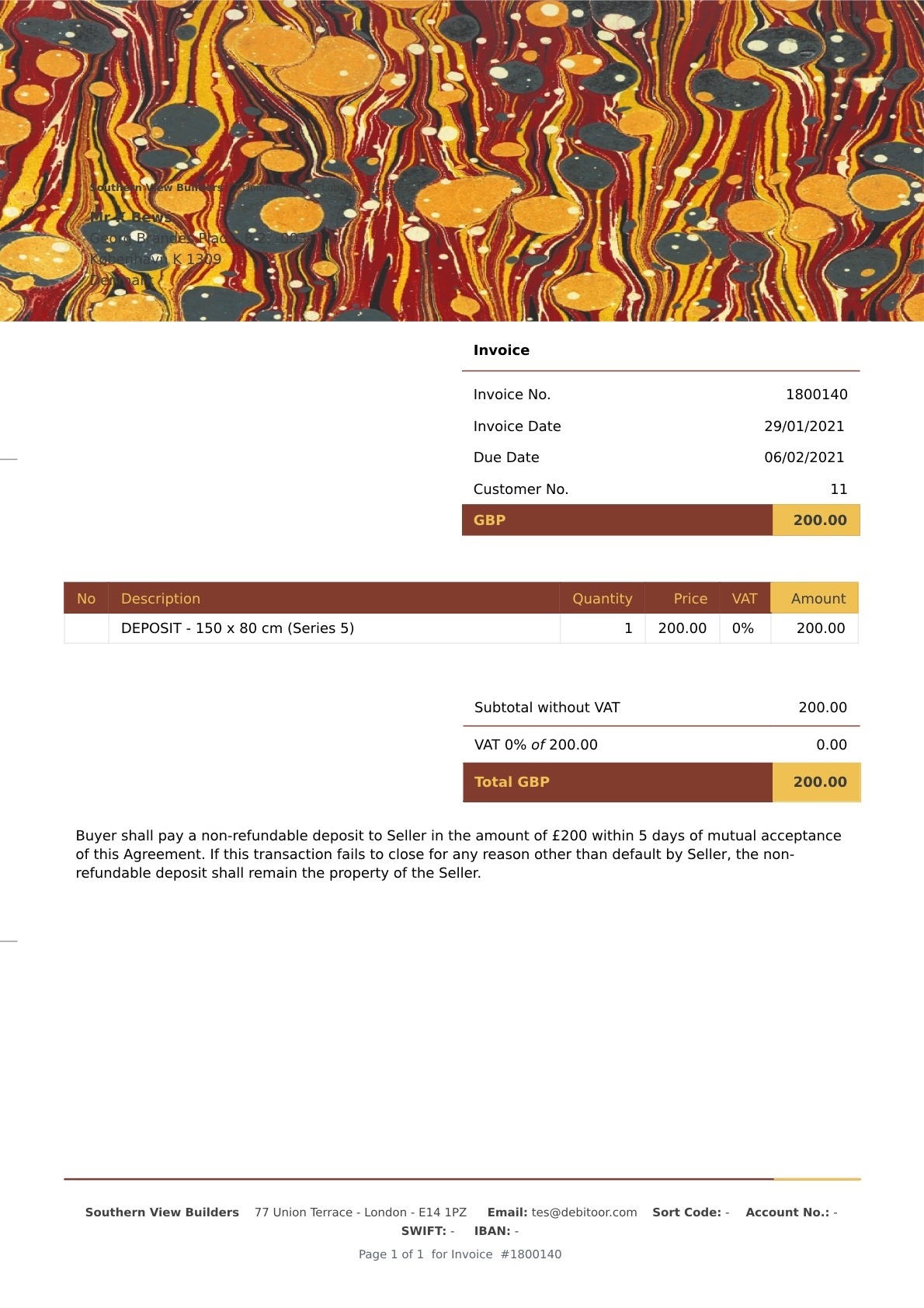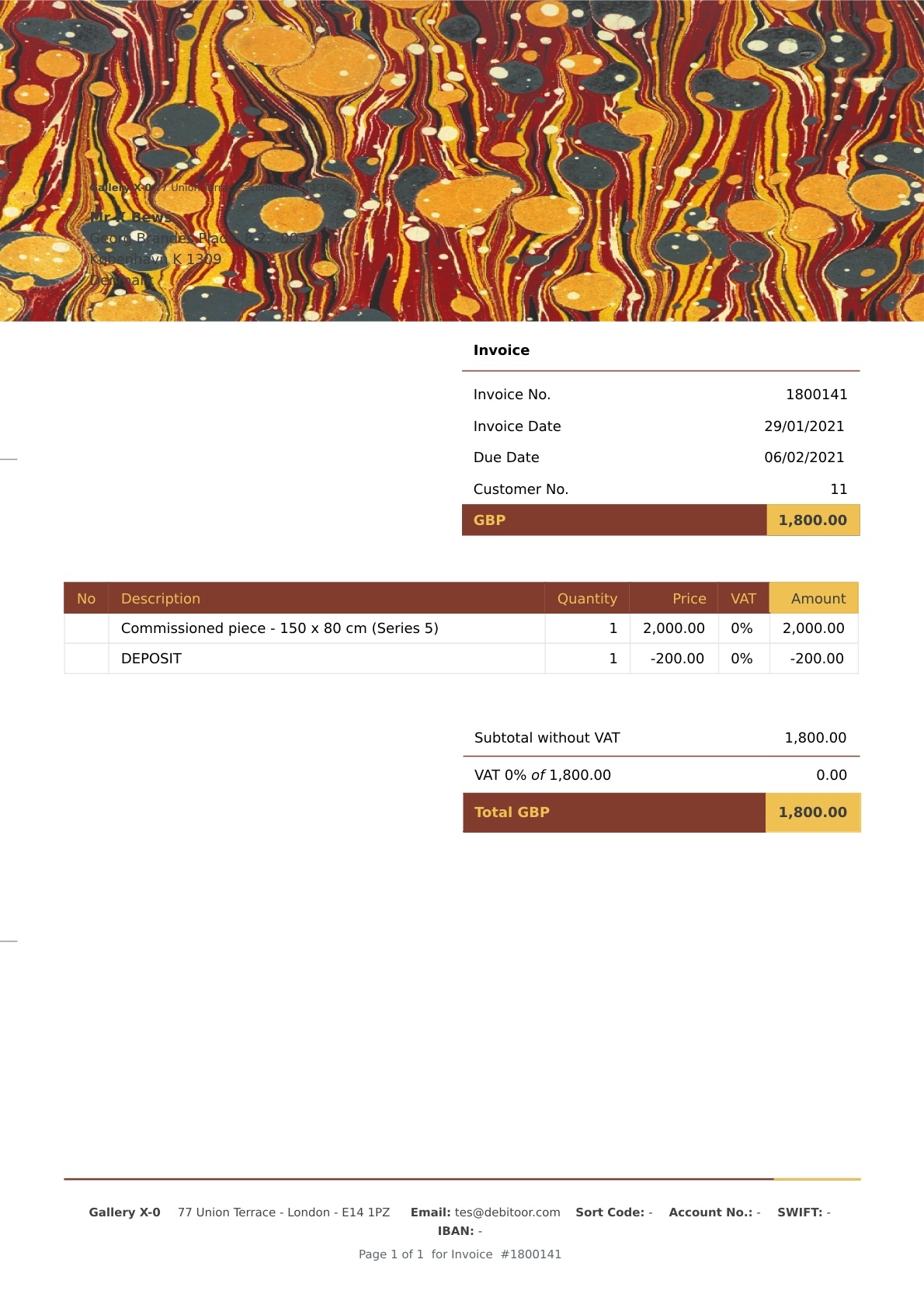Deposits are a great way to help secure work with clients and avoid financial loss. In some industries, it is common practice to request a percentage of the total amount due to be paid upfront as a deposit.

This article explores how your business can benefit from deposits and implement deposits within its invoicing practices. It explores the advantages deposits will bring to your business, notes when you should request a deposit, and explains how you should record these transactions in Debitoor.
How deposits will help your business succeed
If you collect deposits from your customers, it will improve your business’ cash flow. If the project is particularly long, the deposit gives your company an income until the final payment is received. Having a prepaid deposit will also mean that you can cover your business’ expenses whilst you work on the project.
By requesting a deposit, it helps to cushion the business against financial loss. It means that the business is assured they will at least receive a portion of what is owed. However, it’s still important to note that a deposit does not fully guarantee that you’ll receive the full payment from your customer. Even if the deposit is non-refundable, the customer may be unable to pay the final amount. In this case, the final invoice must be cancelled with a credit note.
If a particular project requires the business to invest in materials or products that cannot be easily resold, taking an initial deposit helps the business to limit the financial risk involved.
A deposit therefore functions as a form of collateral for the total sale amount and helps to increase the likelihood that the sale will go ahead. After all, a customer will not want to lose a non-refundable deposit.
When should you request a deposit?
If you work within certain industries, deposits may be very common. For example, if you work within manufacturing or building, it’s expected that the sale is secured with a deposit before work begins.
Equally, freelancers or artists who work on commissions may require deposit from their customers. Simply put, if a sale is risky or requires a lot of work from the business, requesting a deposit may help the seller feel more comfortable proceeding.
The deposit should be paid before the complete amount. It should be requested once the job has been agreed and should be paid before the business starts any work. Only once a deposit has been received, can the business feel assured that they will see a return on any investment they make.
Any terms and conditions, i.e., whether the deposit is refundable or not, should be clearly stated on the deposit’s invoice and explained to the customer.
Creating an invoice for a deposit
You should invoice your customer for a deposit in just the same way as any other invoice. If you use Debitoor invoicing software, you should simply create a new invoice and add the deposit as an item. Make sure to label it as ‘Deposit’ and include any terms and conditions, for instance, whether this is refundable or not.

If you are an artist for example, you may collect a deposit from your customer before starting a commissioned piece. Suppose the total cost of a piece of commissioned art is £2,000, but you have already collected £200 deposit, when you create the final invoice for the full amount, you would invoice for the full amount (£2,000), and then add another line named ‘Deposit’ and register this with a negative amount, i.e. -£200.

This way, the second invoice shows that the deposit has already been paid and deducted from the total due. The total due on the second invoice will therefore be £1,800.
Securing work with a deposit - a summary
By requesting a deposit from a customer before you begin work, you are able to check whether they are serious about the work. A customer is unlikely to pay a non-refundable deposit unless they are sure they want to complete the sale. Using deposits therefore helps to minimise risk for the business.
You should send an invoice for a deposit in just the same way as you would invoice for any other item. You should clearly state your terms and conditions, and make sure you have received payment for the deposit before you begin the work.
